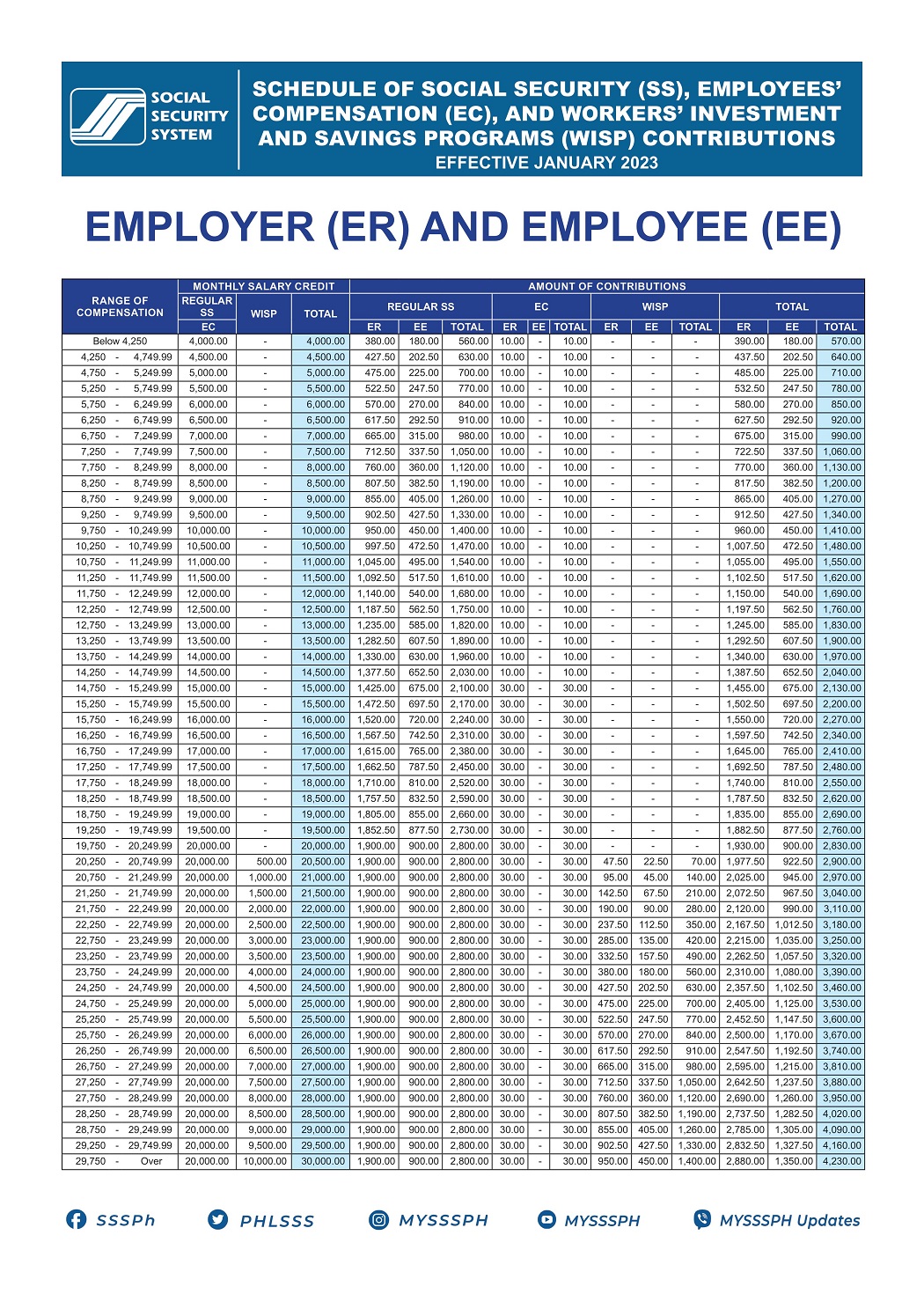The Social Security System (SSS) in the Philippines plays a vital role in providing financial assistance to employees, employers, self-employed individuals, and voluntary members. The SSS offers various benefits such as retirement, sickness, maternity, disability, and death benefits, making contributions an essential part of long-term financial security.
Whether you’re an employee, self-employed, or a business owner, understanding the latest SSS Contribution Table is essential to ensure compliance and to maximize the benefits you can receive.
For first-time employers, learning the SSS Employer Registration: Complete Requirements and Process for First-Time Employers in the Philippines is crucial to ensure proper enrollment and to avoid any potential penalties.
In this article, we will break down the SSS contribution rates, who should contribute, how to calculate your contributions, and the changes made in 2024.
Who Should Pay SSS Contributions?
SSS contributions are mandatory for the following groups:
-
- Private Sector Employees: Both the employer and the employee share the cost of contributions.
- Self-employed Individuals: Must shoulder their own SSS contributions.
- Voluntary Members: Those who opt to contribute even if they are not formally employed (e.g., overseas Filipino workers, freelancers).
- Household Employers and Kasambahays (Domestic Workers): Contributions are shared between the employer and the kasambahay, following the same system as private-sector employees.
What’s New in the 2024 SSS Contribution Table?
Starting in 2024, the SSS contribution rate has increased to 13% to 14%, as mandated by the Social Security Act of 2018. This incremental increase is part of the government’s plan to ensure the sustainability of the SSS fund for future generations. The updated contributions are computed based on the Monthly Salary Credit (MSC), which has also been adjusted to accommodate wage growth.
Understanding the SSS Contribution Table
The SSS Contribution Table is divided into several columns, each representing a different factor in the contribution formula:
-
- Monthly Salary Credit (MSC): This is the basis for calculating the contributions. It represents a member’s monthly salary or income, rounded to the nearest contribution bracket.
- Employer Share: The amount that the employer contributes for their employees.
- Employee Share: The amount deducted from the employee’s monthly salary.
- Total Contribution: The combined contribution of the employee and employer.
- SE/VM Share: The amount paid by self-employed and voluntary members, which is the total of both employer and employee shares.

How to Calculate Your SSS Contribution
For Employees
The SSS contribution is shared between the employer and the employee, with the employer paying the larger share. If you’re an employee, your contribution is automatically deducted from your salary, and the employer pays the total amount to SSS on your behalf.
Example:
If your Monthly Salary Credit is PHP 20,000, your Employer Share will be PHP 2,400, and your Employee Share will be PHP 800.
Total Contribution: PHP 3,200.
For Self-Employed and Voluntary Members
Self-employed and voluntary members are responsible for paying both the employer and employee share.
Example:
If your Monthly Salary Credit is PHP 20,000, you must pay the full PHP 3,200 by yourself.
SSS Benefits Based on Contributions
SSS contributions are crucial as they determine the amount of benefits you are entitled to receive. Here’s a quick overview of the benefits you can avail of based on your contributions:
-
- Retirement: Upon reaching retirement age (60-65 years old), you can receive a monthly pension or a lump sum, depending on the number of contributions made.
- Sickness: Financial assistance during periods of illness, with up to 120 days of leave covered by the SSS.
- Maternity: Female members can avail of maternity benefits for each childbirth, miscarriage, or emergency termination of pregnancy.
- Disability: Members with total or partial disabilities can receive financial support based on their contributions.
- Death: In the event of a member’s death, their beneficiaries will receive either a lump sum or a monthly pension.
- Unemployment: Employees who lose their jobs involuntarily may claim unemployment benefits, a relatively new feature under the expanded SSS law.
How to Pay Your SSS Contributions
For Employees
-
- Your employer will automatically deduct your contribution from your salary and remit it to the SSS.
For Self-Employed and Voluntary Members
-
- You can pay your SSS contributions online via the SSS Member Portal, SSS mobile app, or through accredited payment centers like Bayad Center, G-Cash, and PayMaya.
Penalties for Late Payments
Late or missed contributions may incur penalties and affect your eligibility for SSS benefits. For employers, it is mandatory to remit contributions on or before the due date to avoid fines. For self-employed and voluntary members, contributions must be paid within the prescribed period for each quarter.
Staying informed about the latest SSS Contribution Table is essential for all members—whether you’re an employee, employer, self-employed, or a voluntary member. Understanding your contributions, how they are calculated, and the benefits you can gain is key to securing your future financial well-being.
As contribution rates increase, the SSS promises enhanced services and benefits for members, making it all the more important to keep up with your contributions.
For more information, visit the SSS website or contact their hotline for the most up-to-date details on contribution rates and benefits.


